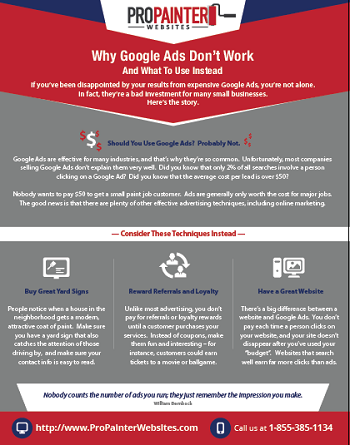Check Out The Role Of Seasonal Factors In The Success Of Commercial External Paint And Discover The Best Times To Safeguard Enduring Results For Your Project
Check Out The Role Of Seasonal Factors In The Success Of Commercial External Paint And Discover The Best Times To Safeguard Enduring Results For Your Project
Blog Article
https://www.417mag.com/417-home/home-decor/colby-kerns-monochromatic-paintings/ Composed By-Fox Rodriquez
When you're planning an industrial outside painting job, seasonal variables can make or break your outcomes. You'll intend to think about how temperature level and moisture influence paint application and drying out times. Selecting the ideal season can ensure your paint sticks properly and lasts much longer. Yet which seasons are absolutely the very best for this type of job? Let's discover the crucial elements that can impact your task's success.
The Effect of Temperature Level on Paint Application
When you're planning an industrial outside paint job, the temperature can considerably affect how well the paint adheres and dries.
Ideally, you want to repaint when temperature levels vary between 50 ° F and 85 ° F. If it's too cool, the paint might not heal effectively, leading to problems like peeling or splitting.
On the other hand, if it's too hot, the paint can dry out too swiftly, stopping appropriate adhesion and causing an uneven coating.
You should also think about the time of day; morning or late afternoon provides cooler temperature levels, which can be a lot more favorable.
Always examine the maker's suggestions for the specific paint you're using, as they frequently give support on the suitable temperature level variety for ideal results.
Moisture and Its Effect on Drying Times
Temperature isn't the only environmental aspect that affects your industrial exterior painting job; humidity plays a considerable duty as well. small job painters near me can decrease drying out times dramatically, affecting the general high quality of your paint job.
When the air is saturated with dampness, the paint takes longer to heal, which can lead to concerns like inadequate attachment and a greater danger of mildew development. If you're repainting on a particularly humid day, be planned for prolonged delay times in between layers.
It's important to keep track of regional weather conditions and strategy as necessary. Preferably, aim for moisture degrees between 40% and 70% for optimum drying.
Keeping these consider mind guarantees your project remains on track and delivers a long lasting finish.
Best Seasons for Commercial Outside Painting Projects
What's the best season for your industrial outside paint jobs?
Springtime and very early loss are generally your best options. Throughout relevant web site , temperature levels are light, and humidity degrees are usually lower, producing ideal problems for paint application and drying.
Stay clear of summertime's intense heat, which can cause paint to dry too promptly, resulting in poor adhesion and coating. Similarly, winter's cold temperature levels can hinder proper drying out and healing, risking the longevity of your paint task.
Go for days with temperatures in between 50 ° F and 85 ° F for optimal outcomes. Remember to inspect the regional weather forecast for rain, as damp problems can wreck your task.
Preparation around these factors guarantees your painting task runs efficiently and lasts much longer.
Final thought
To conclude, preparing your industrial outside painting jobs around seasonal factors to consider can make a significant distinction in the end result. By scheduling work during the suitable temperature levels and moisture levels, you'll make certain much better adhesion and drying times. Keep in mind to watch on regional weather forecasts and select the right time of year-- springtime and early autumn are your best options. Taking these actions will certainly aid you attain a long lasting and professional surface that lasts.
